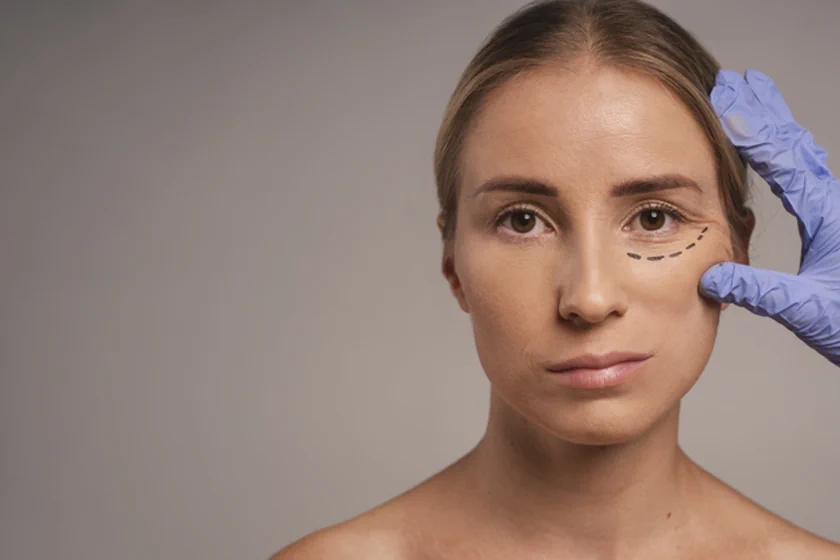|
Getting your Trinity Audio player ready...
|
Imagine waking up one day to find your vision suddenly impaired, colors muted, or dark spots obstructing your view. The thought alone is terrifying, but for millions of people worldwide, this is a daily reality due to retinal problems. The retina, a thin layer of tissue at the back of the eye, plays a crucial role in how we see. When it malfunctions, the consequences can be life-altering.
Retinal disorders are not as rare as one might think. According to the World Health Organization, over 2.2 billion people globally suffer from some form of vision impairment or blindness, with retinal issues being a significant contributor.
Understanding the types, symptoms, and treatments of retinal problems is crucial not just for those at risk, but for everyone. Early detection and prompt treatment can mean the difference between preserving your sight and facing irreversible damage.
In this blog, we will delve into the various retinal disorders, exploring their causes, symptoms, and the latest advancements in treatment. By raising awareness and providing valuable information, we hope to empower you to take proactive steps in maintaining your eye health and safeguarding your vision against these potentially devastating conditions. And the importance of a regular eye exam cannot be understated, especially in conditions where the importance of timely detection and intervention plays a vital role.
Common Problems
Here are some of the most common retinal problems:
Retinal Tear
A retinal tear occurs when the retina develops a small rip or hole. This can happen due to aging or trauma and may lead to retinal detachment if not treated promptly. Symptoms often include sudden flashes of light, floaters, or a shadow over the field of vision. This is more commonly seen in myopic patients (patients who have spectacle power).
Retinal Detachment
Retinal detachment is a more severe condition where the retina pulls away from its normal position. This detachment deprives the retina of essential nutrients and oxygen, leading to potential permanent vision loss if not treated immediately. Symptoms include a sudden increase in floaters, flashes of light, and a curtain-like shadow over the vision.
Diabetic Retinopathy
Diabetic retinopathy is a complication of diabetes that affects the blood vessels in the retina. High blood sugar levels can damage these vessels, leading to vision impairment and blindness. Early stages may not present noticeable symptoms, making regular eye check-ups crucial for diabetics. Advanced stages can cause blurred vision, floaters, and vision loss. Early stages can benefit from non-invasive retinal lasers or minimally invasive intravitreal injections of certain drugs. While advanced cases may require more morbid and complicated surgeries.
Macular Hole
A macular hole is a small break in the macula, the part of the retina responsible for sharp, central vision. This condition can cause blurred and distorted central vision. Early symptoms may include difficulty reading or recognizing faces. A vitrectomy is often required to treat macular holes, and timely intervention at a specialized eye hospital can lead to better outcomes.
Macular Degeneration
Macular degeneration, particularly age-related macular degeneration (AMD), is a leading cause of vision loss in older adults. This condition affects the macula, leading to a gradual loss of central vision. There are two types: dry and wet. Dry AMD progresses slowly with minimal treatment options, while wet AMD can cause rapid vision loss but may be treated with anti-VEGF injections and laser therapy. Regular check-ups with an eye specialist in Vadodara can help detect AMD early and manage its progression effectively.
Retinitis
Retinitis refers to inflammation of the retina, which can be caused by infections, autoimmune diseases, or other underlying conditions. Symptoms include blurred vision, night blindness, and vision loss. Treatment depends on the underlying cause and may involve medications to reduce inflammation or treat infections.
Retinitis Pigmentosa
Retinitis pigmentosa is a group of genetic disorders that cause progressive loss of vision due to the degeneration of photoreceptor cells in the retina. Early symptoms include difficulty seeing at night and loss of peripheral vision, eventually leading to central vision loss. While there is no cure, ongoing research and treatment options such as vitamin A supplements, retinal implants, and gene therapy offer hope. Regular monitoring by an eye specialist at the best eye hospital in Vadodara is crucial for managing this condition.
Retinoblastoma
Retinoblastoma is a rare tumor but one of the most common types of eye cancer that primarily affects young children. It originates in the retina and can be life-threatening if not treated promptly. Symptoms include a white color in the pupil (white reflex in the eye on a flash photo), squint eye, and vision problems. Treatment options include chemotherapy, radiation therapy, laser therapy, and surgery.
Macular Edema
Macular edema is the swelling or thickening of the macula due to fluid leakage from retinal blood vessels. This condition can occur due to various retinal disorders, including diabetic retinopathy. Symptoms include blurred or wavy central vision. Treatment options include intravitreal injections, laser therapy, and corticosteroids.
Retinal Vein Occlusion
Retinal vein occlusion occurs when one of the veins carrying blood away from the retina becomes blocked, leading to swelling and bleeding. Symptoms include sudden vision loss or blurred vision. Treatment options include intravitreal injections, laser therapy, and surgery. Early intervention at a specialized eye hospital is essential to manage this condition and prevent further complications.
Common Symptoms
Recognizing the symptoms of retinal problems is essential for early diagnosis and treatment, which can prevent severe vision loss. Here are some common symptoms to be aware of:
Flashes of Light: Sudden flashes or streaks of light, especially in peripheral vision, can indicate a retinal tear or detachment. Immediate medical attention is necessary to prevent further complications.
Floaters:Seeing small, dark shapes or spots that seem to float across your vision can be normal, but a sudden increase in the number or size of a floater may signal a retinal issue.
Blurred Vision: Gradual or sudden blurriness in vision can be a sign of various retinal disorders, such as diabetic retinopathy or macular degeneration.
Distorted Vision: Straight lines appear wavy, or objects looking smaller or larger than they are may indicate conditions like macular degeneration or epiretinal membranes.
Shadow or Curtain Over Vision: A dark shadow or curtain across part of your visual field is a serious symptom often associated with retinal detachment and requires immediate attention.
Color Changes: Difficulty distinguishing colors or seeing them as faded can be related to retinal conditions.
Loss of Central or Peripheral Vision: Sudden or gradual loss of central or peripheral vision can indicate several retinal issues, from macular degeneration to retinal vein occlusion.
Causes and Risk Factors of Retinal Problems
Retinal problems can arise from a variety of causes and are influenced by numerous risk factors. Identifying these can help in the prevention and early detection of retinal disorders, ensuring timely treatment and better outcomes.
Aging: As we age, the retina can deteriorate, leading to conditions like age-related macular degeneration (AMD) and retinal detachment.
Diabetes: High blood sugar levels associated with diabetes can damage the blood vessels in the retina, leading to diabetic retinopathy.
Trauma: Injuries to the eye can cause retinal tears or detachment.
Genetics: Hereditary conditions like retinitis pigmentosa and retinoblastoma are passed down through families and can lead to severe vision impairment.
Inflammation and Infections: Conditions such as uveitis or infections like cytomegalovirus retinitis can cause inflammation, leading to retinal damage.
Vascular Problems: Issues like retinal vein occlusion occur when blood flow is blocked, causing swelling and bleeding in the retina.
Age: Older adults are at higher risk for retinal conditions such as AMD and retinal detachment.
Diabetes: Individuals with diabetes are at significant risk for diabetic retinopathy, especially if blood sugar levels are not well controlled.
Family History: A family history of retinal diseases increases the risk of developing similar conditions.
High Blood Pressure: Hypertension can damage retinal blood vessels, leading to conditions like hypertensive retinopathy.
Obesity: Excess body weight increases the risk of developing type 2 diabetes and subsequent diabetic retinopathy.
Smoking: Smoking is a significant risk factor for AMD and other retinal diseases.
Eye Injuries: Trauma to the eye can lead to retinal tears or detachment.
Prolonged Sun Exposure: Without proper eye protection, UV radiation can damage the retina over time.
Chronic Conditions: Conditions such as high cholesterol and cardiovascular disease can affect blood flow to the retina, increasing the risk of retinal problems.
Diagnosis
Early and accurate diagnosis of retinal problems is crucial for effective treatment and preserving vision. Eye specialists utilize a variety of diagnostic methods to detect and evaluate retinal disorders.
Common Diagnostic Methods
Comprehensive Eye Exam: A detailed eye examination includes checking visual acuity, pupil response, eye pressure, and overall eye health. This exam helps in detecting any abnormalities in the retina.
Dilated Eye Exam: Dilating eye drops are used to widen the pupils, allowing the specialist to examine the retina more thoroughly. This method helps in identifying conditions such as diabetic retinopathy, macular degeneration, and retinal detachment.
Optical Coherence Tomography (OCT): OCT is a non-invasive imaging test that uses light waves to take cross-section images of the retina. It helps in diagnosing macular degeneration, macular edema, and other retinal diseases by providing detailed images of the retina’s layers.
Fluorescein Angiography: A dye is injected into the bloodstream, and a special camera is used to take pictures of the retina. This test helps in identifying abnormal blood vessels and leaks in conditions like diabetic retinopathy and retinal vein occlusion.
Ultrasound Imaging: Ultrasound uses sound waves to create images of the eye, particularly useful when the view of the retina is obscured by bleeding or cataracts. It helps in diagnosing retinal detachment and tumors such as retinoblastoma.
Fundus Photography: A specialized camera captures detailed images of the retina, which are used for monitoring and diagnosing retinal diseases. It is particularly useful in documenting the progression of conditions like diabetic retinopathy.
Electroretinography (ERG): ERG measures the electrical responses of the retina’s light-sensitive cells (rods and cones). This test is used to diagnose genetic retinal conditions such as retinitis pigmentosa.
Visual Field Test: This test measures peripheral vision and is useful in detecting retinal conditions that affect side vision, such as retinal detachment and retinitis pigmentosa.
Treatment of Retinal Problems
Treating retinal problems requires a tailored approach based on the specific condition, its severity, and the individual’s overall health. Here’s an overview of common treatment options:
Medications: In some cases, medications may be prescribed to manage retinal conditions. Essential micronutrients, for example, can help reduce abnormal blood vessel growth in conditions like macular degeneration and diabetic retinopathy. Steroids may also be used to reduce inflammation associated with certain retinal disorders.
Laser Therapy: Laser treatment, such as photocoagulation, is often used to seal leaking blood vessels or destroy abnormal tissue in the retina. It can be effective in treating conditions like diabetic retinopathy, retinal vein occlusion, and certain types of retinal tears.
Surgical Procedures: Surgery may be necessary for more severe retinal problems. Vitrectomy, for instance, involves removing vitreous gel from the eye and may be performed to repair retinal detachment or remove scar tissue. Scleral buckling is another surgical technique used to reattach the retina by placing a silicone band around the eye.
Intraocular Injections: Injections of medications directly into the eye, such as anti-VEGF drugs or steroids, may be recommended for conditions like macular edema or certain types of retinal vein occlusion. These injections can help reduce swelling and improve vision.
Implantable Devices: Advanced technologies like retinal implants or sustained-release drug delivery implants may be used in certain cases to improve vision or manage retinal conditions long-term.
Lifestyle Changes: For individuals with conditions like age-related macular degeneration, making lifestyle changes such as quitting smoking, eating a healthy diet rich in antioxidants and omega-3 fatty acids, and protecting the eyes from UV radiation can help slow disease progression.
Regular Monitoring: Many retinal problems require ongoing monitoring to assess treatment effectiveness and disease progression. Regular eye exams and follow-up appointments with an eye specialist are essential for managing retinal conditions effectively.
When to Contact a Doctor
Knowing when to contact a doctor regarding potential retinal problems is crucial for timely diagnosis and treatment. Here are some situations in which it’s important to seek professional medical attention:
Sudden Vision Changes: If you experience sudden changes in your vision, such as the appearance of floaters, flashes of light, or a sudden increase in blurry or distorted vision, contact an eye specialist promptly.
Persistent Eye Symptoms: If you have persistent symptoms such as eye pain, redness, irritation, or a sensation of something in your eye that doesn’t improve with home remedies, it’s important to get it checked out by a doctor.
Gradual Vision Loss: Gradual loss of vision, especially if it occurs in specific areas of your visual field or affects central vision, may indicate underlying retinal problems like macular degeneration or diabetic retinopathy.
Family History of Eye Conditions: If you have a family history of retinal disorders or other eye conditions, regular eye exams are essential for early detection and intervention.
Diabetes or High Blood Pressure: Individuals with diabetes or high blood pressure are at increased risk for retinal problems such as diabetic retinopathy or hypertensive retinopathy. Regular eye exams are recommended to monitor for signs of these conditions.
Recent Eye Trauma: If you’ve experienced any trauma to the eye, such as a blow to the eye or head injury, it’s important to have your eyes examined by a doctor to rule out any damage to the retina.
Routine Eye Exams: Even if you don’t have any specific symptoms, regular eye exams are important for maintaining eye health and detecting any underlying retinal problems early, especially as you age.
Changes in Peripheral Vision: Any changes in your peripheral vision, such as the appearance of blind spots or areas of darkness, should be evaluated by a doctor as they may indicate retinal detachment or other serious conditions.
Persistent Headaches or Eye Strain: If you experience persistent headaches or eye strain, especially if they are accompanied by changes in vision, it’s important to consult a doctor to rule out any underlying retinal issues.
Concerns About Eye Health: If you have any concerns about your eye health or notice any unusual symptoms related to your vision, don’t hesitate to contact an eye specialist for evaluation and advice.
Summary
In conclusion, the health of the retina is vital for maintaining clear vision and overall eye health. Retinal problems can vary in severity, from minor issues that may resolve on their own to more serious conditions that require prompt medical attention. Early detection through regular eye exams and awareness of symptoms is crucial for timely diagnosis and treatment, which can often prevent further vision loss and preserve quality of life.
By staying proactive about eye care and seeking professional help when needed, individuals can take control of their retinal health and minimize the impact of retinal problems on their vision. Remember, your eyes are precious, and investing in their care today can lead to a brighter, clearer future tomorrow.
FAQs
Can retina issues be fixed?
Yes, many retinal issues can be treated and managed effectively with medical interventions such as medications, laser therapy, or surgery.
Can the retina heal naturally?
In some cases, minor retinal issues may heal on their own, but more severe conditions often require medical intervention for proper treatment and preservation of vision.
Does the retina weaken with age?
Yes, the retina can weaken with age, leading to conditions like age-related macular degeneration (AMD) and retinal thinning. Regular eye exams are important for detecting and managing age-related changes in the retina.
What are the symptoms of a weak retina?
Symptoms of a weakened retina may include blurred or distorted vision, difficulty seeing in low light, loss of peripheral vision, flashes of light, and the appearance of floaters or dark spots in the field of vision.
How can I improve my retina?
Maintaining a healthy lifestyle, including eating a balanced diet rich in antioxidants and omega-3 fatty acids, protecting your eyes from UV radiation, avoiding smoking, managing chronic conditions like diabetes and hypertension, and regular exercise, can help support retinal health. Additionally, following recommended eye care guidelines and attending regular eye exams can aid in the early detection and management of retinal issues.
![]()







